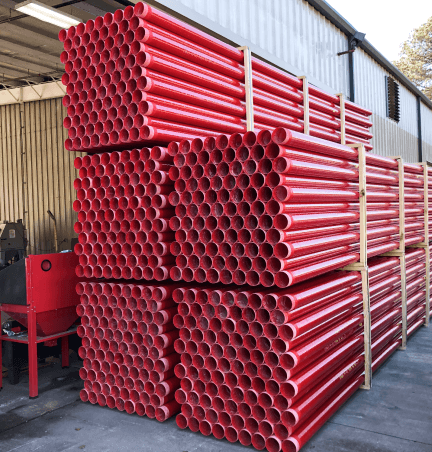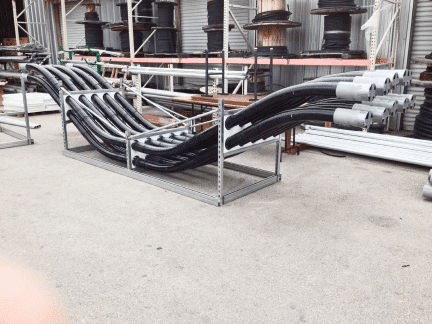Product Comparison
Champion Fiberglass is corrosion resistant to over 70 chemicals. It also withstands sun and saltwater and it is UV- and impact-resistant.
Compared to other conduits, Champion Fiberglass offers the light weight of PVC, all the strength of aluminum and steel conduit, but with unparalleled strength and durability in challenging environments.
With its base temperature range of -60° to +250° F (for Champion Duct® and Champion Haz Duct® conduit), Champion Fiberglass conduit performs well in a wide range of environments. It also handles well in low temperatures, retaining its properties and allowing year-round installations.
At a weight 15x lighter than PVC-coated steel (without sacrificing any of the toughness), Champion Fiberglass is light enough to build lasting savings on manpower and installation costs. Most diameters (when comparing a 100-foot length of conduit) are also lighter than aluminum, PVC SCH 40, PVC SCH 80, and galvanized rigid steel.
Fiberglass conduit will not melt or weld the affected cable to the inside of the conduit under fault conditions as can happen with PVC, steel, and aluminum conduit.
Champion Fiberglass conduit is an excellent material for avoiding “burn through” when pulling cable. Fiberglass conduit offers one of the lowest coefficients of friction available today for conduit systems. It is compatible with and unaffected by any of the pulling lubricants currently available.
Fiberglass conduit does not release toxic halogens (i.e. chlorine and bromine) when burning, unlike PVC SCH 40, PVC SCH 80, and PVC-coated steel.
This NECA Labor Rates chart clearly shows fiberglass conduit to have the lowest installation times across the board for all but two conduit diameters.
Use the Champion Fiberglass Conduit Calculator to estimate possible savings when using Champion Fiberglass Conduit vs. other in-market conduit materials.
Our conduit includes UV stabilizers and pigments in its standard epoxy resins to slow the effects of weathering. The conduit is also subjected to accelerated UV testing (2,000 hours Xenon arc accelerated UV testing) by UL as a requirement for UL certification. If your application will experience extreme exposure to UV, please contact us to discuss the extreme UV resistant conduit options that are now available. For more in-depth information on how ambient environments affect UV resistance, visit our Champion Duct® catalog.
The Interference Joint system consists of an integral bell and a spigot with a buttress-type male thread, with the belled end containing the mating female threads. These can be joined together to form a concrete-tight connection without epoxy for quick and easy concrete embedment application installations. (This system is available exclusively from Champion Fiberglass.) Read more about this and other types of Champion Fiberglass joints in our Champion Duct® catalog.










